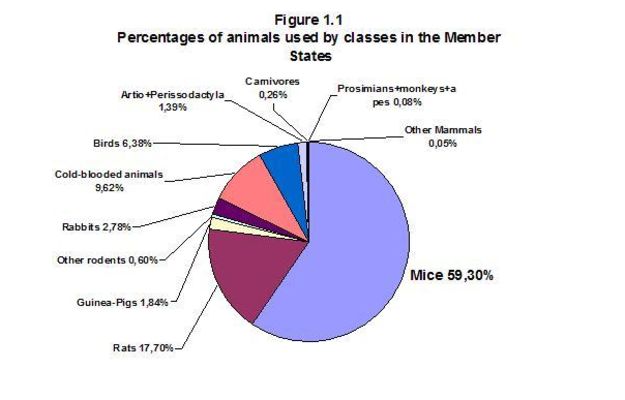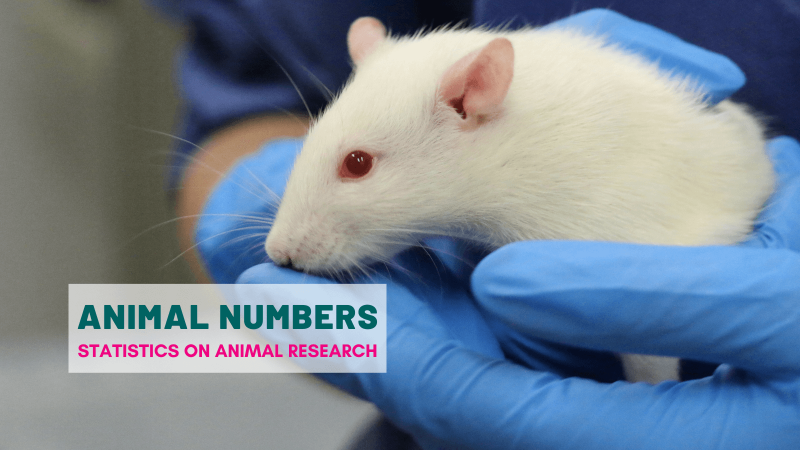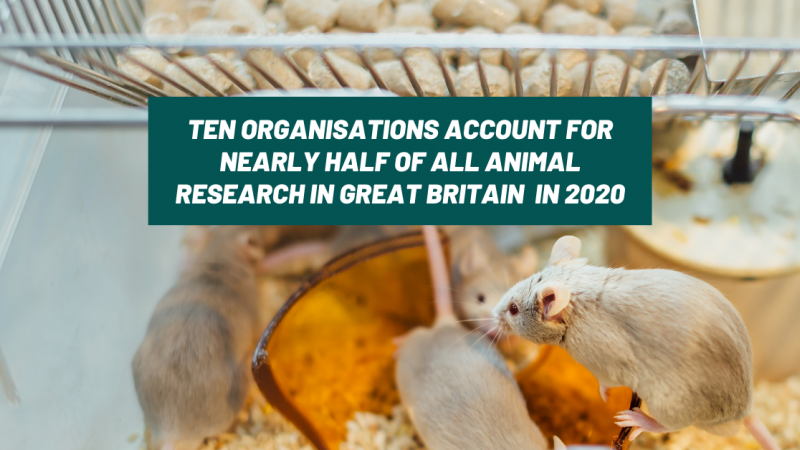The overall number of animals used in research across European member states does not seem to have changed much since 2005, standing at just above 12 million in 2008 (a decrease of 116,561 since 2005).
The European Commission released its sixth statistical report yesterday, showing the number of animals being used in research across the 27 member states for the year 2008. These European statistics are not available on a yearly basis. The last report was published in 2005. This report, therefore, represents changes in the number and types of animals over a three-year period, and also includes data from Bulgaria and Romania for the first time (they joined the EU in 2007).
As previously, just over half of the total research animals in the EU are used in France, UK and Germany. Other countries such as Spain, Ireland, Estonia and Austria have reported increases in their use of animals since 2005.
Whilst mice (59%) and rats (17%) remain the most used species across Europe, totalling over nine million animals, the balance has slightly changed. Over the three-year period, there was a 10% increase in the number of mice being used, whereas the total number of rats has decreased by around the same percentage.
The report also shows a 12% decrease in the number of dogs used (nearly 3,000 fewer animals) and a 40% increase in the use of pigs over the three-year period (of 25,000 animals). There was a small increase in the number of cats used from 3,898 to 4,088 animals (a 5% increase).
The statistics also show a large decrease in the number of new world monkeys (73% from 1,564 to 904) and old world monkeys (11% from 8,208 to 7,404) being used in research. There was a large percentage increase in the use of Prosimians (primates such as Lemurs) of 46%, however, this equates to an increase of only 584 animals (from 677 to 1,261). In 2002 and 2005, the statistics showed that no great apes were used in research in 2008.
Overall the European statistics follow the current trend in the UK and indeed across the world, where greater use of rodents (especially GM mice) is pushing their numbers up, whilst at the same time the numbers of larger animals, are being used in research are declining especially non-human primates.
A news item today on the website of the journal Nature looks at the figures in terms of research fields.

Last edited: 27 October 2022 18:30




